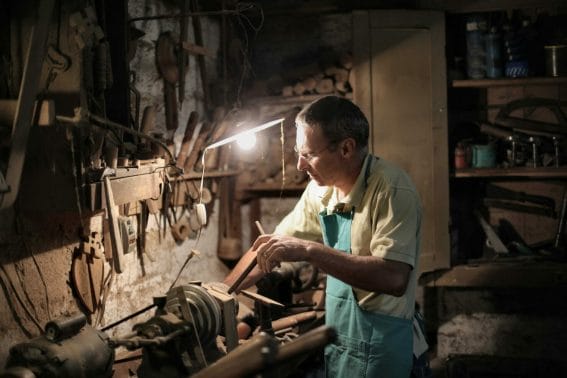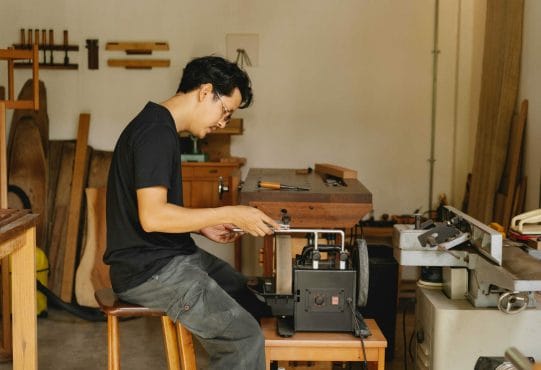Introduction to Knife Sharpening
Becoming a professional knife sharpener can be a rewarding career for those who have a passion for sharp objects and enjoy working with their hands. It is a skill that requires patience, attention to detail, and a good eye for symmetry.
It is important to familiarize yourself with the different types of knives and their specific sharpening needs. This includes understanding the differences between Western and Japanese knives, as well as learning about the various blade materials and their properties.
Also, it is essential to invest in quality sharpening equipment and tools. This can include whetstones, sharpening rods, honing guides, and other specialty tools. It is also important to practice proper technique and safety when sharpening knives.
Once you feel confident in your skills, you can consider starting your own sharpening business or seeking employment with a knife retailer or manufacturer. As with any profession, it is important to continue learning and staying up-to-date with the latest techniques and technologies in the field. By following these steps and putting in the necessary time and effort, you can become a skilled and successful professional knife sharpener.
In this detailed guide, we will explore the steps necessary to become a professional knife sharpener.
The Tools of the Trade

The “Tools of the Trade” section of the guide “How to Become a Professional Knife Sharpener” would likely cover the specific equipment and materials needed for knife sharpening. This could include both hand tools and power tools, as well as consumables such as abrasive compounds and lubricants.
Some of the hand tools that might be mentioned in this section include whetstones, sharpening rods, honing guides, and other specialty sharpening tools. It is important to understand the differences between these tools and how to use them properly in order to achieve a precise and even edge on a knife blade.
You must be familiar with the use of power tools for knife sharpening, such as belt sanders or bench grinders. These tools can be helpful for quickly removing large amounts of material from a blade, but they can also be more difficult to control and may not produce as fine of an edge as hand tools.
Other items that might be included in the “Tools of the Trade” section include protective gear, such as gloves and eye protection, as well as cleaning supplies and lubricants for maintaining the sharpening equipment.
Overall, the goal of this section would be to provide a comprehensive list of the tools and materials needed for professional knife sharpening, as well as to offer guidance on how to select and care for these items.
The Sharpening Process
This would include information on preparing the knife and the sharpening surface, as well as the proper technique for using hand tools or power tools to sharpen the blade.
The guide might begin by discussing the importance of starting with a clean and well-maintained sharpening surface. This could include using a designated sharpening area or sharpening stone, as well as cleaning and lubricating the surface as needed.
Next, the guide might cover the proper technique for positioning the knife and the sharpening tool, as well as the correct angle and pressure to use when sharpening the blade. It might also include information on how to test the sharpness of the blade and how to troubleshoot common sharpening problems.
Other topics that might be covered in the “Sharpening Process” section could include sharpening specific types of knives, such as Western or Japanese knives, as well as sharpening serrated or scalloped edges. The guide might also discuss the use of abrasive compounds and honing oils, as well as how to maintain the sharpness of the blade between sharpening sessions.
Overall, the goal of this section would be to provide clear and concise instructions for sharpening a knife, as well as to offer tips and tricks for achieving the best possible results.
Also Read:
Do Knife Sharpeners Work
Are Electric Knife Sharpeners Worth It?
Maintaining Your Sharpening Tools
In this, we will cover the proper care and maintenance of the equipment and materials used for knife sharpening. This could include both hand tools and power tools, as well as consumables such as abrasive compounds and lubricants.
One key aspect of maintaining sharpening tools is to keep them clean and well-organized. This can help to extend the life of the tools and ensure that they are in good working condition. The guide might offer tips on how to clean and store the tools, as well as how to protect them from damage or wear.
Another important aspect of maintaining sharpening tools is to regularly inspect them for wear or damage. This could include checking for chipped or damaged sharpening stones, as well as replacing worn-out abrasives or lubricants.
Overall, the goal of this section would be to provide guidance on how to properly care for and maintain the tools and materials needed for professional knife sharpening, in order to ensure that they remain in good working condition and can be used effectively for a long period of time.
The Advantages of Knife Sharpening Business
One advantage of this type of business is that it can be relatively low-cost to start and operate. Most of the necessary tools and equipment can be purchased for a reasonable price, and there is usually little need for expensive advertising or marketing. Additionally, knife sharpening is a service that is always in demand, as people rely on sharp knives for a wide variety of tasks in their daily lives.
Another advantage of a knife sharpening business is the opportunity for flexibility and independence. Many sharpeners choose to work on a mobile basis, traveling to different locations to sharpen knives for customers. This can provide a sense of freedom and autonomy that is not possible in traditional employment.
There is also the potential for a knife sharpening business to be profitable, especially if the sharpener is able to establish a good reputation and attract a steady stream of customers. As with any business, the success of a knife sharpening business will depend on factors such as the sharpener’s skill and dedication, as well as their ability to effectively market and manage the business.
Check out some knife sharpener kits here!
Conclusion
By familiarizing oneself with the different types of knives and their specific sharpening needs, investing in quality equipment and tools, and seeking out opportunities for practical experience and further education, aspiring knife sharpeners can build the skills and confidence needed to succeed in this rewarding career.
Starting a knife-sharpening business can also provide the opportunity for flexibility, independence, and profitability. However, as with any business, success will depend on factors such as the sharpener’s skill and dedication, as well as their ability to effectively market and manage the business.
Overall, becoming a professional knife sharpener requires patience, attention to detail, and a good eye for symmetry. By following the steps outlined in this guide and putting in the necessary time and effort, it is possible to develop the skills and knowledge needed to become a skilled and successful professional knife sharpener.
Thanks for reading.



